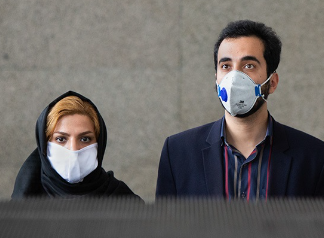July 29, 2022

The coronavirus is back! The daily case count is nowhere near the stunning highs of 50,000 last summer or 40,000 in February, but it has surged from single digits in early June to a high of ??? 10,000 on late July ??.
The daily case count is expected to rise further. The daily death toll remains very low, usually in single digits. But the death toll normally doesn’t rise as fast as the case count. However, few expect the death toll to skyrocket as the variants of the virus now seen in Iran, BA.4 and BA.5, are milder variants that cause few serious cases of the disease and even fewer deaths. But those variants are also reported to be more resistant to the vaccines approved by the World Health Organization (WHO).
On July 5, the Ministry of Health authorized and encouraged a fourth vaccine dose for all age groups once six months have passed since the last vaccination. But the challenge is the large number of people who never got two doses to begin with.
Barely two-thirds of the population have received the two doses required for basic immunity. And less than one-third have received one booster shot.
More than 80 percent of the vaccinations administered so far have been of the Chinese Sinopharm product. But Iran halted all vaccine imports a few months ago and has been emphasizing domestic vaccines. Millions of imported doses remain in stock, although it isn’t clear how many have already expired.
Iranian social media have been filled in recent days with reports of people going to get a shot and discovering the dose being given then had expired. One person said that on noticing the expiration date on the dosage being prepared for him, he expressed concern but was told by a staffer, “We know more about health than you.”
Furthermore, it appears the Iranian public doesn’t trust the domestic vaccines. There are frequent reports of people refusing to take a domestic shot and demanding Sinopharm.
The Razi Institute, which produced one of the first domestic vaccines, named Cov Pars, announced July 5 that it had closed its production line after the Health Ministry failed to pay for millions of doses it had ordered. Mohammad-Hossain Fallah, deputy head of the institute’s research and technology center, was quoted as saying the ministry ordered 3.5 million doses in February, that the institute had produced the full order and that the ministry has not paid up. He said, “Coronavirus vaccines do not sell well in the country.”
The government has said that 20 million doses of seven domestic vaccines have been ordered by the government. It isn’t clear how many of those have been produced—or how many have been paid for by the government. None of Iran’s seven vaccines has been approved by the World Health Organization.
The return of the virus means the return of counties coded red for “high risk” after several weeks without a single red county. The red first appeared again on July 8 when four of Iran’s 448 countries were coded red and 14 were coded orange for “moderate” risk of infection. A total of 142 counties were coded yellow or “low risk” and 288 counties or a majority were still coded blue for normal. As of July 24, there were 57 red counties, 86 orange, 199 yellow or low risk and only 106 blue or under control.
A week later, Health Minister Bahram Eyenollahi formally announced that the seventh wave of the virus had hit Iran.
Meanwhile, five people filed a suit against regime leaders, including Supreme Leader Ali Khamenehi, for banning the import of British- and American-made vaccines—which Khamenehi said could be poisoned to harm Iranians—and for gross negligence in responding to the epidemic. All five have now been sentenced to jail terms.
Hadi Ghaemi, executive director of the Center for Human Rights in Iran (CHRI), said, “These people are being punished in order to send a message to the people of Iran: Seeking an accountable government in the Islamic Republic will land you in jail.” The five received jail terms of four years, four years, two years, six months and 95 days for the one woman involved.























